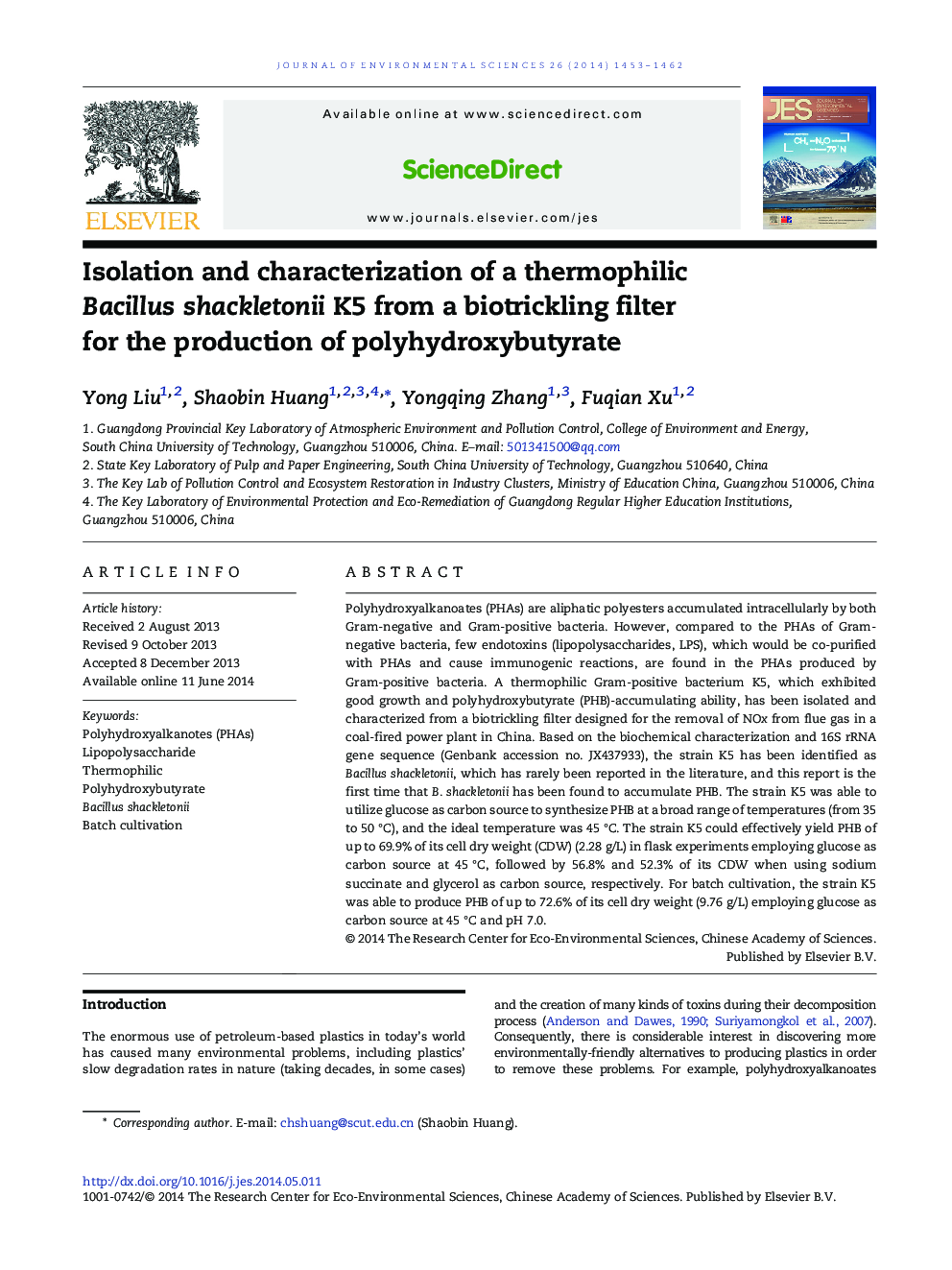| Article ID | Journal | Published Year | Pages | File Type |
|---|---|---|---|---|
| 4454495 | Journal of Environmental Sciences | 2014 | 10 Pages |
Polyhydroxyalkanoates (PHAs) are aliphatic polyesters accumulated intracellularly by both Gram-negative and Gram-positive bacteria. However, compared to the PHAs of Gram-negative bacteria, few endotoxins (lipopolysaccharides, LPS), which would be co-purified with PHAs and cause immunogenic reactions, are found in the PHAs produced by Gram-positive bacteria. A thermophilic Gram-positive bacterium K5, which exhibited good growth and polyhydroxybutyrate (PHB)-accumulating ability, has been isolated and characterized from a biotrickling filter designed for the removal of NOx from flue gas in a coal-fired power plant in China. Based on the biochemical characterization and 16S rRNA gene sequence (Genbank accession no. JX437933), the strain K5 has been identified as Bacillus shackletonii, which has rarely been reported in the literature, and this report is the first time that B. shackletonii has been found to accumulate PHB. The strain K5 was able to utilize glucose as carbon source to synthesize PHB at a broad range of temperatures (from 35 to 50 °C), and the ideal temperature was 45 °C. The strain K5 could effectively yield PHB of up to 69.9% of its cell dry weight (CDW) (2.28 g/L) in flask experiments employing glucose as carbon source at 45 °C, followed by 56.8% and 52.3% of its CDW when using sodium succinate and glycerol as carbon source, respectively. For batch cultivation, the strain K5 was able to produce PHB of up to 72.6% of its cell dry weight (9.76 g/L) employing glucose as carbon source at 45 °C and pH 7.0.
